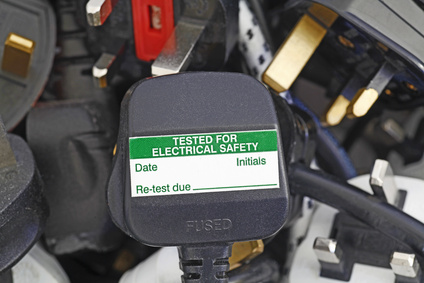New Regulations: Electrical Safety Standards in the Private Rented Sector
Published on July 25, 2020 by Sarah Mac

The NRLA says that over 75 per cent of residential landlords organise voluntary inspections of the electrical installations in their properties, even though up until recently, the law didn’t make this obligatory. The law in this respect has however changed this month. As of 1 July 2020, there are new standards in England controlling electrical safety standards in the private rented sector, including a legal duty to provide written evidence of testing.
The Electrical Safety Standards in the Private Rented Sector (England) Regulations 2020 make it compulsory for residential landlords in England to maintain their properties to the given standards, and to provide documentary evidence that they are compliant.
What obligations do the Electrical Safety Standards place on private landlords?
All privately rented properties must meet the 18th Edition of the Wiring Regulations (British Standard 7671). A report – the Electrical Installation Condition Report (EICR) – must be provided as evidence of such. The EICR must be provided by a suitably qualified and competent individual.
In line with the Electrical Safety Standards Regulations, residential landlords must:
- Adhere to national standards for electrical safety (18th Edition British Standard 7671)
- Ensure electrical installations in private rented properties are inspected and tested by a suitably qualified and competent person every five years.
- Obtain a report (EICR) detailing the results of the inspection and testing. The report must set out a date for the next required inspection and test.
- Provide the existing tenant with a copy of the EICR within 28 days of the inspection and test.
- Provide any new tenant with a copy of the EICR ahead of the commencement of their tenancy.
- Provide any prospective tenant who asks for a one, a copy of the EICR within 28 days of the request.
- Provide the local authority with a copy of the EICR within seven days of being asked for one.
- Retain a copy of the EICR to provide to the inspector and tester being used to undertake the next inspection and test.
- Where the EICR highlights a need for remedial or further investigative work, to ensure this work is completed in at least 28 days, or within whatever shorter period may be set out in the report.
- Provide the tenant and local authority with written confirmation that the remedial works have been completed within 28 days of the completion date.
What properties are covered by the new Electrical Regulations?
The regulations became law on 1 June 2020. This means that any new tenancies starting in England on or after this date must have an electrical inspection carried out and an EICR provided from 1 July 2020. Existing tenancies must comply from 1 April 2021.
The Regulations apply to all assured shorthold tenancies and licences to occupy, with just a few exceptions. The following fall outside of the Regulations:
- Tenants on a long lease of seven or more years
- Social housing
- Student halls of residence
- Refuges and hostels
- Lodgers
- Care homes, hospitals and hospices
- Any other healthcare-based accommodation
Houses in multiple occupation (HMOs) have traditionally fallen under the Management of Houses in Multiple Occupation (England) Regulations 2006. However, the new Electrical Safety Regulations have seen this superseded. This means that the new legislation also applies to HMOs.
The Housing Act 2004 has also been amended by these Regulations. A new compulsory condition will now appear in HMO licences to make certain that all electrical installations within the property are in good working order, and safe for continued usage. The Government’s guidance on HMO licences explains the requirements in more detail.
What happens in the event of a breach of the Electrical Safety Regulations?
A breach of the Regulations could lead to the local authority imposing a civil penalty of up to £30,000.
If there is a need for non-urgent remedial work to be carried out, the local authority must serve the landlord a notice setting out the work required and providing a timescale of 28 days in which to do so. The landlord has a right to make representations against the notice, and this has to be done within 21 days of service of the notice. The local authority has to respond to the representations within 7 days. Until they do, the requirement to undertake the work is put on hold.
If the local authority feels that the landlord has breached the Regulations, and they are able to obtain permission from the tenant, then they can step in and undertake any necessary emergency remedial works, passing on the costs to the landlord.
The new Electrical Safety Regulations – further reading
When it comes to making sure the person being used to carry out the electrical testing and provide the EICR is suitably qualified and competent, the following Government guidance applies.
The same guidance sets out what needs to happen during the inspection. It also goes into greater detail as to what the Electrical Installation Condition Report (EICR) should include. In addition, there is information on how to tackle remedial work, with advice on the route to follow should the EICR recommend action to make safe any electrical installations within the property.

